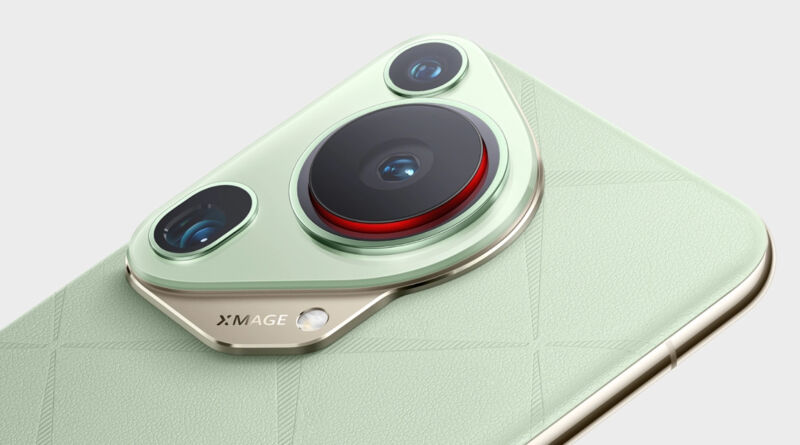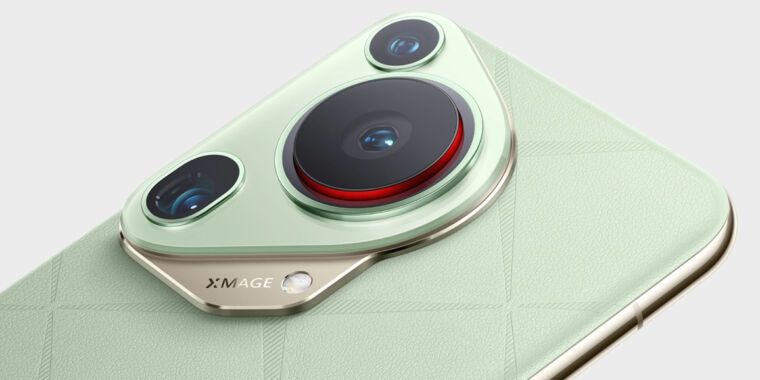
Huawei
Huawei is still out there making phones, even if it has been shunned by the US government and the US-aligned tech ecosystem. The latest phone has a new name: “Huawei Pura 70.” While you wouldn’t ever want to deal with the cobbled-together SoC or whatever is going on with Huawei’s software, the “Ultra” model does have a cool party trick up its sleeve: a pop-out main camera lens.
In the years before the smartphone took over all entry-level photography, there used to be a thing called a “point-and-shoot camera.” This was a purpose-built device that only took photos, couldn’t go on the Internet, and wouldn’t let you watch the latest TikTok videos. The trademark feature of these devices was a retractable camera lens, where the front lens (there was only one!) would grow out of the front of the camera when you turned it on. This would give your camera better, longer lens geometry to work with when the camera was on, and would collapse down for easier storage when it was off.
Huawei’s latest phone is replicating that. The giant rear camera lens actually grows out of the phone somewhat, thanks to some complicated gearing inside the phone. It’s only the tiniest few millimeters, but it’s a start. Smartphone manufacturers often resist adding bigger lenses to their devices because they want to still have pocketable devices. A pop-up lens would give the camera engineers more room to work with while still maintaining pocketability.
The retractable camera lens uses a 50MP, 1-inch sensor and apparently also has an adjustable aperture of F1.6~F4.0. There’s no optical zoom (which could be a justification for the pop-out lens)—so it looks like the lens movement is just to get set up to the base lens configuration. (We’re working from a machine-translated Chinese-language website, in our defense.) There are two other cameras in the rear triangle-shaped camera bump: a 40MP ultrawide and a 50MP 3.5x telephoto.
-
Here’s a good look at just how much this camera bump sticks out, it’s huge! There is a lot going on here.
Huawei -
Here’s a complicated gif about how this all works.
Huawei -
The front and back.
Huawei -
The back looks really nice with that leathery texture and an argyle pattern.
Huawei -
Colors! Green and brown are certainly choices.
Huawei -
A side view. Is that a flat screen?
Huawei
Huawei’s spec sheet makes zero mention of the SoC. There is not even a name or model number—we’re just left to assume that there must be an SoC in there somewhere. According to Geekbench uploads, it’s called the “Kirin 9010,” which sounds like a minor upgrade over Huawei’s current chip. US sanctions mean Huawei is stuck attempting to build chips without the help of current state-of-the-art chip production tools and facilities from US-aligned countries. A lot has been made of these chips in the tech press—Huawei doesn’t have access to new chip manufacturing equipment, can’t get the newest designs from ARM, and can’t have its designs made at the industry-leading chip fab, TSMC. The company has been relying on Chinese partner SMIC for fabrication, using the old machines from the pre-sanction era, and has kept on trucking with less competitive chips that seem frozen in time.
Huawei, to its credit, hasn’t hyped up its post-sanction chips that much (it’s not even talking about this one!). In November 2020, before US sanctions had really taken hold, the company worked with Arm to create the Kirin 9000, a 5 nm SoC with four Cortex A77 CPUs and four Cortex A55 CPUs. Three years later, Huawei’s first post-sanction chip was the modestly named “Kirin 9000s,” a reportedly 7 nm chip that was scraped together with whatever technology Huawei could find. The general vibe you get from the model number change of 9000 to 9000s is “not much of an improvement,” and the benchmarks have proven that to be true. The new chip in the Pura 70 is a “Kirin 9010” and is probably still 7 nm. So even Huawei is admitting it’s not making much progress without the US-aligned chip ecosystem.
Other specs include a whopping 16GB of RAM and 512GB of storage on the “Ultra” model. There’s a 6.8-inch, 120 Hz OLED with a 2844×1260 resolution, and the battery is 5200 mAh. The phone only has Wi-Fi 6e, not Wi-Fi 7, presumably thanks to Uncle Sam. All of these components are going to be from random, off-the-beaten-path manufacturers who are brave enough to go against the will of the US government, so who knows how well anything works.
Anyway, we just wanted to write about the neat camera lens. It’s only for sale in China starting today, with the Ultra model clocking in at 9,999 Yuan, or about $1,380.
Correction: We updated this at 5:41pm to change the Kirin 9000 from 5 nm to 7 nm, so the switch to SMIC went backward one generation.

